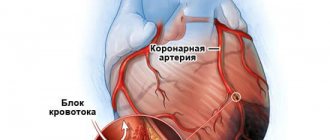More information about other diseases starting with the letter “G”: Ganglioneuritis, Ganglioneuroblastoma, Pterygopalatine ganglionitis, Soft tissue hematoma, Hematomyelia, Hemiballism, Hemorrhagic stroke, Ganglioneuroma, Hemangioblastoma, Hemifacial spasm, Generalized epilepsy, Cerebral germinoma, Hydrocephalus, Hyperventilation syndrome, Hyperkinesis, Hypersomnia, Hypertensive cerebral crisis, Hypertensive encephalopathy, Hypnic headache, Brain glioma
What is hypertensive cerebral crisis?
Hypertensive cerebral crisis is a disease characterized by a sharp jump in blood pressure to maximum values, which causes disruptions in the flow of blood cells to the brain. The clinical picture of the disease presented depends on the form, so a person suffering from a similar disease may experience: pain in the head area and other complaints associated with an increase in the level of intracranial pressure, mental state disorders with additional focal symptoms, or even a combination of these problems.
The medical plan for treating patients includes the use of a complex of antihypertensive and sedative techniques (taken to stop the symptoms of the abnormality). All medications are selected in accordance with the type of pathological process present. Pharmacological agents of a vasoactive and symptomatic nature are used for therapy.
Information about the diagnosis and treatment of patients
Regardless of the causes of a hypertensive crisis in a man or woman, diagnosis comes first to determine the further course of treatment. Symptoms may coincide with other pathological conditions. Diagnosis of hypertensive crisis includes the following procedures and studies:
- Analysis of urine;
- ECG, CT, radiography;
- heart rate measurement.
The doctor needs to collect a detailed history of the patient's condition. When the attacks began, the frequency of their occurrence, symptoms, whether the patient receives regular antihypertensive therapy, what methods were used to reduce blood pressure, whether there was experience in independently stopping the crisis, the presence of concomitant diseases - basic information for the doctor during the diagnosis.
Useful facts
This painful process occurring in the human body is a type of hypertensive crisis. Often, it manifests itself in hypertensive diseases, since their course causes an increase in the load on the system that regulates cerebral vascular tone. A similar disease can develop with other abnormalities that lead to an increase in the degree of pressure numbers (atherosclerosis, diabetic nephropathy, pyelonephritis, etc.).
In addition, many qualified experts argue that a hypertensive crisis can occur after serious stressful moments. The secondary reasons that provoke the progression of the disease and lead to impaired control of cerebral vascular tone are:
- Changes in weather conditions in a fairly short period of time.
- Prolonged exposure to the cold.
- Eating large amounts of food.
- Severe physical overload of the body and more.
Types of hypertensive cerebral crisis
In modern medicine, experts distinguish the pathological process by the mechanism of development of abnormal deformations:
Angiohypotonic form - manifests itself as a result of a decrease in the level of vascular tone and the deposition of blood cells along the venous structure, as a result of which the pressure of the intracranial duct begins to increase.- The ischemic form is caused by a lack of oxygen in the brain tissue, which appears after a sudden reflex spasm of the brain arteries as a response to a pressure surge.
- Complex hypertensive cerebral crisis is a combination of the previous two variants of the disease.
Doctors say that depending on the presence/absence of a side effect, the neurological field classifies this phenomenon as a complicated or uncomplicated type. Complications may occur as a result of:
- Experienced stroke.
- Attacks of a transient nature.
- Rupture of an aneurysm in blood vessels.
- Pregnancy is called eclampsia in medicine.
main sources
With stable functioning, the system that controls the regulation of blood circulation in the brain works so that when blood pressure jumps, the tone of the cerebral arteries begins to increase, which makes it possible to prevent large amounts of blood from entering the vessels. If the activity of this mechanism is disrupted, a lack or excess of tonic influence occurs. If a patient’s blood pressure increases, then the reaction of the cerebral part of a tonic nature is small, so a large number of blood cells enter the vessels. Also, in this situation, a second compensatory device must work, the principle of which is to increase the tone of the venous area. Thanks to it, the accumulation of blood in the skull is reduced. If there is not a sufficient increase in tone, the patient begins to develop the described disease.
The main component of a hypertensive cerebral crisis is stagnant accumulations in the venous region of the brain, causing an accumulation of excess fluid in the closed cavity of the skull, which provokes a jump in blood pressure. Further, a large increase in arterial tone gives a signal in response to an increase in pressure, as a result of which disruptions in the blood supply to brain tissue occur with the subsequent spread of hypoxia and manifestations of an ischemic type of disease. First of all, the pathological process affects the parts that are most sensitive to the lack of oxygen, such as the cortex. Insufficient uniformity of the cerebral vascular cavity and the possible addition of vasospasm of local origin can cause the occurrence of abnormal places with the most severe attacks of ischemia, which are associated with diagnosed clinical symptoms.
A set of sequential phenomena that determine the mechanisms of formation and course of the disease of complex hypertensive cerebral crisis is considered to be the manifestation of hypotension with the deposition of blood cells in the venous region and ischemia of certain areas of the brain due to problems that have arisen in the capillary blood flow due to shunting of blood into the veins, avoiding the capillary section .
Risk factors
In most cases, transient ischemic attack is caused by atherosclerotic plaques blocking small blood vessels. The risk group for developing transient ischemic attack includes persons suffering from the following diseases and conditions:
- atherosclerosis of cerebral vessels - this pathology is considered the main cause of ischemic attacks. 90% of strokes in older people are caused by atherosclerosis;
- arterial hypertension – ranks second in the incidence of strokes;
- hereditary predisposition - if any of the family members have similar conditions in the past, the likelihood of developing an ischemic stroke increases;
- age factor - after 60 years, the risk of developing the disease increases significantly.
- diabetes mellitus – hypertension and increased blood clotting in patients with diabetes lead to worsening atherosclerotic damage to blood vessels;
- systemic vascular diseases;
- obesity – excess body weight is quite often the cause of ischemic attacks;
- heart diseases;
- osteochondrosis of the cervical spine, especially spasm of the cervical artery;
- alcohol abuse and smoking.
According to statistics, transient ischemic attacks more often affect middle-aged male patients. However, symptoms can also appear in childhood and young adults with cardiovascular disease.
Diagnosis of transient ischemic attack is carried out on the basis of information obtained during medical research:
- computed tomography;
- magnetic resonance imaging;
- Doppler ultrasound;
- positron emission tomography of all parts of the brain.
To make the most accurate diagnosis, additional laboratory procedures may be prescribed.
Symptoms of hypertensive cerebral crisis
The complaints experienced by a person with a similar disease vary significantly as a result of the form of the disease present. Let's consider each type separately.
Angiohypotonic crisis
Angiohypotonic crisis - begins with the manifestation of painful sensations in the head area, often located in the back of the head. In addition, typical heaviness is noticed. The main factor indicating the presence of this particular form of deviation is increased pain when changing body position, during which the outflow of blood from the cranial cavity is inhibited. In addition, the patient is informed of the presence of pressure on and behind the eyeballs. Some people are diagnosed with nausea and gag reflexes, which can relieve the patient’s general well-being for a short period of time. Also, the following manifestations were noticed:
- High level of sweating.
- Presence of tachycardia.
- Difficulty breathing.
- Cyanosis of the facial area.
- Retardation in behavior.
- Nystagmus.
- Tendon reflex disorders.
Ischemic crisis
Ischemic crisis is a fairly rare manifestation in the field of neurology, occurring exclusively in hypertensive patients who do not complain of pain in the head and can easily withstand pressure surges. Typically, the ischemic form progresses against the background of high blood pressure, in some cases it can go beyond the boundaries of the tonometer scale. Patients experience:
- Increased activity.
- High degree of emotional state.
- External efficiency.
- Irritability, turning into apathy or tearfulness (in special situations people become aggressive).
- Vision problems.
- The occurrence of numbness or tingling in the extremities.
- Difficulty communicating.
- Unstable gait, etc.
Complex crisis
Complex crisis - appears with clinical symptoms that are inherent in the first type of disease, but mainly manifests itself at fairly high blood pressure levels. During the development of the disease during pronounced manifestations, focal problems similar to the ischemic form of the crisis are noticed. The points of inflammation depend on the location of the pathology in the brain tissue.
Severity criteria
There are 3 degrees of severity of TIA. They indicate the positive or negative dynamics of the disease:
- mild degree - lasts approximately 10 minutes, focal symptoms that disappear without consequences;
- moderate degree - lasts from 10 minutes or more, the attack occurs without consequences for the patient’s health;
- severe - transient cerebral ischemic attack is prolonged, and neurological signs worsen.
According to ICD-10, transient ischemic attack has a standard classification:
- TIA in the VBB (vertebrobasilar area);
- TIA in the carotid region;
- TIAs are multiple or bilateral;
- transitional blindness syndrome;
- TGA (transient global amnesia);
- unspecified TIA.
The type and severity of local decrease in blood circulation in the head can only be determined by a qualified medical professional.
Diagnostic measures
If the above-described complaints occur, a person should immediately make an appointment with a professional therapist, a specialist in neurology or cardiology. The necessary instrumental tests are performed only after first aid has been provided to the patient and are required for an in-depth check of the state of blood circulation in the brain, as well as the cardiovascular structure. The most common medical procedures for HCC are:
ECG.- Daily blood pressure monitoring.
- Rheoencephalographic study.
- ECHO-EG.
- EEG.
- Ultrasound Doppler.
- Consultation with an ophthalmologist.
- Ophthalmoscopic examinations.
- Perimetric diagnostics.
- MRI scan.
Causes
TIA is not an independent disease; its occurrence is associated with pathologies of the cardiovascular system, blood clotting problems, vascular injury and large blood loss. The causes of thromboembolism are most often associated with:
- atrial fibrillation;
- sick sinus syndrome;
- mitral stenosis;
- atrial fibrillation;
- dilated cardiomyopathy;
- infective endocarditis;
- atrial myxoma;
- acute heart attack;
- thrombosis of the left atrium.
TIA can occur in patients with:
- patent oval valve;
- artificial heart valve;
- mitral valve calcification;
- heart disease;
- heart failure;
- angiopathy;
- coagulopathy;
- abnormalities in the vertebral and carotid arteries.
How to get rid of it?
If the second and third forms of anomaly are detected, the patient is urgently hospitalized at the nearest medical center. The likelihood of inpatient therapy for the first stage of the disease depends on its severity. One way or another, the presented illness requires complex treatment measures, which will consist of general antihypertensive and tranquilizing techniques (diazepam, phenazepam, etc.).
The doctor prescribes symptomatic treatment and vasoactive components, selected according to the type of cerebral crisis (ß-blockers, ACE inhibitors). Drugs are administered by intravenous drip or jet. The patient will need to adhere to bed rest until blood pressure returns to normal and neurological problems resolve.
Preventive actions
There is no specific prevention that will help prevent the formation of the disease. Although there are recommendations on how to help the body quickly overcome attacks. To do this you will need:
- maintaining a healthy lifestyle, giving up alcohol;
- in the moments between attacks, you can take folk remedies that have a sedative effect (valerian, peony, motherwort in the form of tincture);
- Periodically visit a psychiatrist to develop stress resistance.
If you wish, you can overcome an attack of vegetative crisis. However, this will require strict adherence to your doctor's advice. Timely therapy is a serious prerequisite for eliminating the problem.
To undergo diagnostics and prescribe a course of treatment, contact our medical (formerly NDC) on Gakkelevskaya 33. Click the “SIGN UP” button, get advice from our specialists and come to us. We will help you cope with the disease.
Recommendations for preventing hypertensive cerebral crisis
The main rule in order to avoid the manifestation of a hypertensive crisis is stable antihypertensive therapy for patients with arterial hypertension. Experts advise:
Avoid seeking work that may require heavy lifting, constant bending, or a fixed posture.- Do not stay in the cold for a long time without a hat.
- Prevent stress and emotional overload.
- If constipation occurs, follow a diet and take laxatives.
- If the painful sensations are pronounced in the morning, you should sleep on high pillows and take short walks before sleep.
- Conduct cervical-collar sessions.
- Warm your head under a warm stream of shower or hairdryer.
- Drink strong black tea.
- For severe pain, you should drink caffeine in tablet form.
- Seek help from qualified doctors in a timely manner.
- Do not self-medicate.









